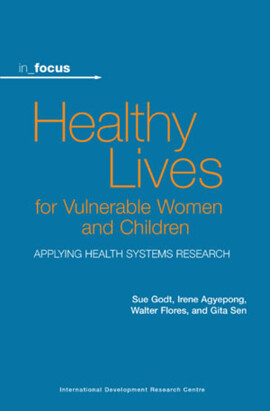
Community Assessment
Guidelines for developing countries
The goal of this introductory text is to assist the reader in identifying causes of ill health in communities, so as to provide more effective and less costly health interventions. Topics explored include basic demographics, water and sanitation, food preparation and nutrition, community resources, health and endemic diseases, and an introduction to the growing field of Rapid Epidemiological Assessment.
Published: 1994
Pages: 160
eBook: 9781780444666
Paperback: 9781853392245
| Preface vii | |||
|---|---|---|---|
| Chapter 1 Introduction 1 | |||
| Chapter 2 First steps to community assessment 5 | |||
| The need for assessment 5 | |||
| Working with community leaders 7 | |||
| Where to start 8 | |||
| Observation methods 10 | |||
| Chapter 3 Basic demographics 13 | |||
| Population density 14 | |||
| Fertility rate and family composition 15 | |||
| Socioeconomic indicators 19 | |||
| Chapter 4 Water and sanitation 25 | |||
| Water quality 25 | |||
| Water quantity 27 | |||
| Human waste disposal 28 | |||
| Disease transmission by water contact 29 | |||
| Water-related diseases 30 | |||
| Chapter 5 Food - preparation and nutrition 35 | |||
| Maternal effects on child nutrition 35 | |||
| Child nutrition 37 | |||
| Food availability - family level 39 | |||
| The cooking facility and cooking methods 40 | |||
| Food selection 43 | |||
| Chapter 6 Food - agriculture 49 | |||
| Food source and food availability 49 | |||
| Factors limiting crop yield 51 | |||
| 1. Seed variety 51 | |||
| 2. Irrigation 52 | |||
| 3. Fertilizer use 53 | |||
| 4. Land management 57 | |||
| 5. Harvesting and storage 58 | |||
| Chapter 7 Identification of community resources 63 | |||
| People | |||
| Raw Materials | |||
| Transportation | |||
| Leaders | |||
| Skilled workers | |||
| Literate people | |||
| Community members | |||
| Traditional healers | |||
| Building materials | |||
| methods | |||
| Cars and trucks | |||
| Human-powered transportation | |||
| Animal-powered transportation | |||
| Water transportation | |||
| Alternative energy sources | |||
| 1. Humans and animals | |||
| 2. Electricity and fossil fuels | |||
| 3. Natural energy sources | |||
| Monetary and material resources | |||
| Outside resources | |||
| 1. Money | |||
| 2. Personnel | |||
| 3. Books and educational materials | |||
| Chapter 8 Health, health care and endemic diseases 79 | |||
| Health care availability 79 | |||
| 1. Barriers to health care 81 | |||
| 2. Health facility services 84 | |||
| 3. Essential medicines 85 | |||
| 4. Vertical programmes 87 | |||
| At-risk groups 88 | |||
| 1. Women 88 | |||
| 2. Children 91 | |||
| 3. The elderly 100 | |||
| 4. Other at-risk groups 101 | |||
| Common and endemic diseases 103 | |||
| 1. Disease prevalence and identification 104 | |||
| 2. Detection of onchocerciasis 107 | |||
| 3. Nightblindness - a screening tool for | |||
| xerophthalmia 109 | |||
| 4. Haematuria and proteinuria as an indicator | |||
| of schistosomiasis 110 | |||
| 5. Estimating malaria prevalence 111 | |||
| Chapter 9 Rapid epidemiological assessment 123 | |||
| Cluster sampling 123 | |||
| Verbal autopsy 125 | |||
| Estimating maternal mortality by the sisterhood method 127 | |||
| Questionnaires aimed at key informants 130 | |||
| RE A summary 133 | |||
| Appendices | |||
| 1. International agricultural research centres 135 | |||
| 2. REA equations 136 | |||
| 3. Health survey guidelines 137 | |||
| 4. Sources for published materials pertaining | |||
| to international health 138 | |||
| Index 139 |
Douglas Stockman
Douglas Stockman has spent most of his career working in Africa where he founded the Organization for West African Health (OWAH), a non-profit organization designed to support small grassroots health programmes in West Africa. He is currently a faculty member in the Department of Family Medicine at the University of Rochester USA where he has created an International Health Education Track and has made care of refugees a priority.





